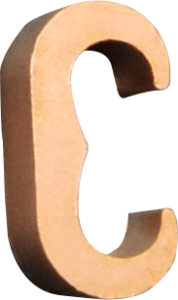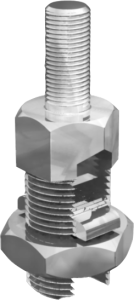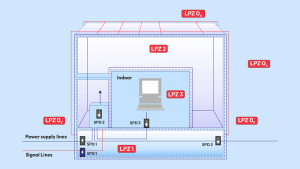When it comes to safeguarding structures against the power of lightning strikes, every detail matters. Among these crucial elements are lightning protection connectors – small components that play an outsized role in keeping buildings and infrastructure safe.
You might be tempted to overlook these small pieces, but don’t be fooled by their size. Choosing the wrong connector can leave your entire structure vulnerable to devastating lightning damage. As an expert in lightning protection systems, we will help you understand these essential components.
In this blog, we’ll explore the various types of Lightning Protection connectors and their specific applications. By the time you finish reading, you will have a clear understanding of how these tiny parts contribute to a robust lightning protection system.
Types of Connectors in Lightning Protection?
A connector in a lightning protection system is a component that joins different parts of the system, such as conductors, air terminals, and ground electrodes. Together, they safely dissipate harmful electrical charge into the ground. These connectors are made from materials like copper, aluminium, brass, and stainless steel depending on their applications.
Bimetallic Connectors
They join aluminum and copper conductors. Connecting aluminium and copper without a bimetallic connector leads to galvanic corrosion. They are made by friction welding, where heat from friction joins copper and aluminium together. Note – different connectors are used for tapes and conductors in Lightning Protection. This one is used for tapes.
Split Bolt Connector
Also known as a T-connector or splicing connector, these connectors join two or more grounding wires, creating a circuit that dissipates harmful currents into the ground. They are designed to replace the traditional splicing of twisted wires, offering a safer and more durable solution. Split Bolt Connectors are used for reliable connections in applications ranging from grounding installations to distribution lines.
Servit Post Connectors
Can you see this threaded part, which is kept out? It connects other components like busbars as needed. Without this threaded part, it would have been same like the split bolt connector.Servit Post Connectors are designed to make copper-to-copper connections, such as connecting the conductor to the busbar in a transformer. Other applications include grounding steel structures and fence posts. We offer various types of servit post connectors, including copper, tin-plated, brass, and more.
Talk to our engineers!
H Tap Connectors

This connector creates tap or parallel connections in distribution lines. Can you see these two distinct grooves? The larger groove is for the main line, while the smaller is for the tap line, this can also be equal depending upon the conductor size. These grooves, along with the fold-over tabs, gives the H Tap its unique compression capabilities.
These connectors excel at two-way splicing. They are used in primary and secondary tapping of main line in a distribution network. Axis H-type connectors have markings to show you the wire size, and number of crimps with the recommended tool, making your installation process easier.
C Connectors
Made from ETP-grade copper, these connectors come with a natural or electro-tinned finish. One key feature of C connectors is their ability to handle multiple wire combinations with a single C-tap, which helps reduce inventory needs. You can use them for direct burial in earth or concrete, making them a versatile option. You cannot separate C connectors once installed. They are permanent, and you can make tap connections with them.
E Connectors

They are a similar version of C connectors but are used when two conductors of different sizes are required, such as 240 mm² and 120 mm². Before going ahead with Types of connectors, have a look the different components used for Earthing.
Figure 8 Connectors

Made from ETP grade copper, these connectors handle multiple wire combinations and are suitable for direct burial in the earth or concrete. They are primarily used for joining “conductor to conductor” and “rod to conductor”. However, the conductor must be open-ended. You cannot make tap connections with these connectors, since both sides are close-ended.
G Connectors

These connectors are also used for joining conductor to conductor and rod to conductor. But unlike Figure 8 connectors, you can make tap connections with them since one end is open. They are needed when there is a significant difference in conductor sizes, such as 240 mm² and 16 mm².
I hope you now have a clear understanding of the different types of connectors used in Earthing & Lightning Protection. At Axis, our team of over 50 engineers is ready to support your project needs for Clamps, Lugs & Connectors, and hundreds of other electrical hardware. At Axis, we have been manufacturing a wide of Lugs and Connectors, for the past 30 years. You will find our connectors installed in, utility scale applications, transformers, transmission and distribution lines and many more.
Thank you for reading the blog, Axis is a leading manufacturer and supplier of Electrical Components to over 80+ Countries. Talk to our industry expert by visiting our Contact Us section. You can also watch our videos by our experts – click here.











